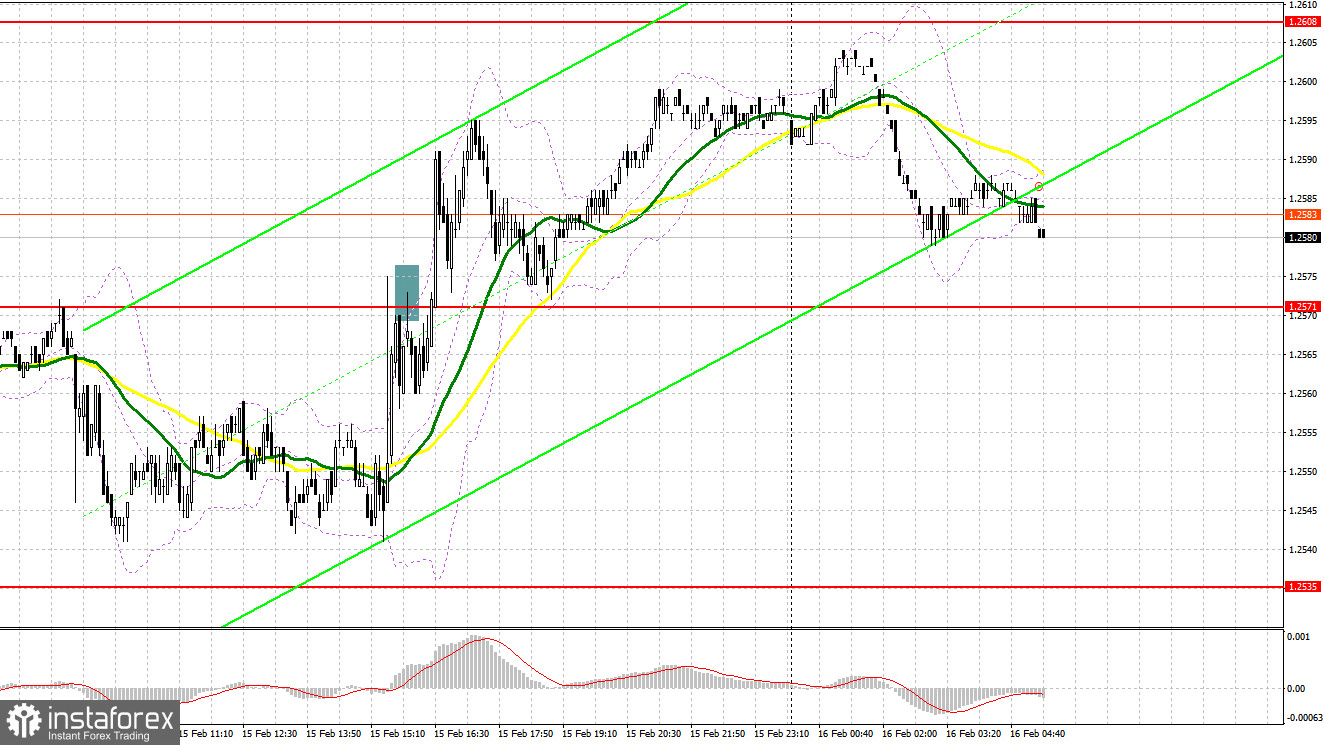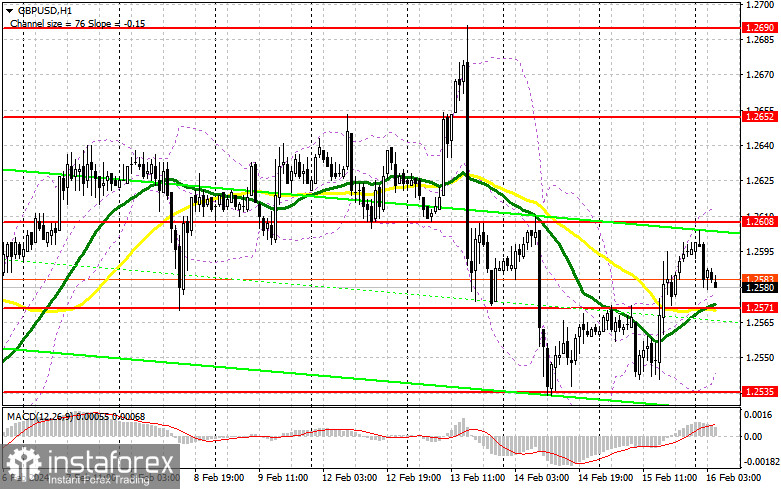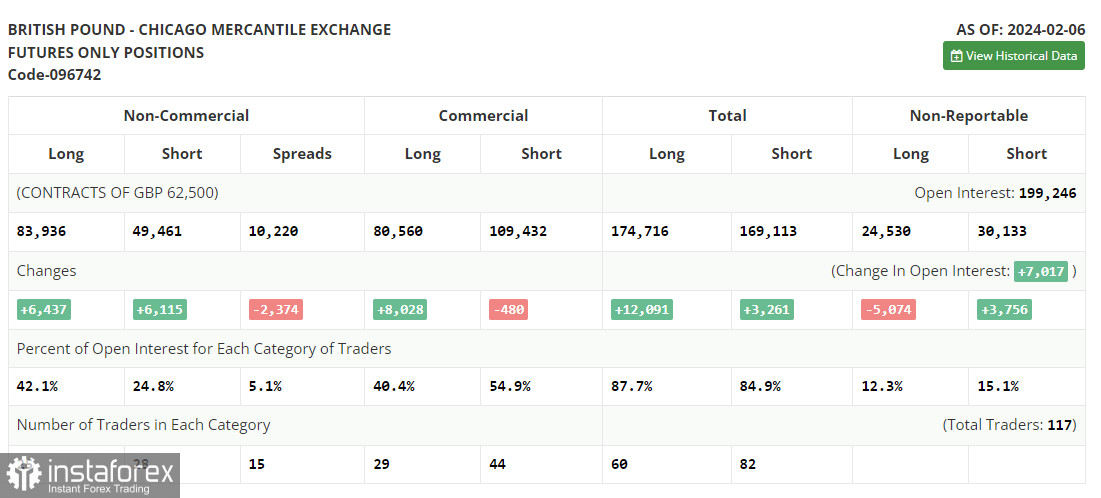Yesterday, GBP/USD generated several signals to enter the market. Now let's look at the 5-minute chart and try to figure out what actually happened. In my morning forecast, I indicated the level of 1.2547 and planned to make decisions on entering the market from there. A decline and false breakout on this mark after weak UK GDP data was a risky move for opening long positions. As a result, the pair rose by 10 pips before it returned to the 1.2547 area. In the afternoon, selling on a false breakout from 1.2571 led to losses, as the pair continued to rise after weak US data.
For long positions on GBP/USD:
Yesterday, the pound edged down on the downbeat UK CPI data. The latest report provides further evidence that the Bank of England needs to lower interest rates, which exerts pressure on the pound. This morning, the UK will release a retail sales report. Weak indicators could once again undermine the pound's position, and this could possibly revive the downtrend. Bank of England MPC member Huw Pill will speak, but I don't think that this will have a significant impact on the overall market sentiment.

The most preferable scenario for me in the current situation would be to buy during a decline near 1.2571 - a new support established yesterday. This is in line with the bullish moving averages. A false breakout of this level would serve as a buy signal, aiming for a recovery towards 1.2608. A breakout and consolidation above this range will strengthen the demand for the pound and open the way to 1.2652, which would be a strong correction for the pound at the end of the week. The ultimate target will be the 1.2690 high where I intend to take profit. In a scenario where GBP/USD falls and there are no buyers at 1.2571, we might see another pound sell-off, which will revive the bear market. In such a scenario, only a false breakout near the next support at 1.2535 would provide an entry signal. I would immediately go long on a bounce from the 1.2507 low, bearing in mind an intraday correction of 30-35 pips.
For short positions on GBP/USD:
Even after yesterday's corrective move, sellers are still in control of the market and their goal is to go beyond the annual low. Very weak UK retail sales data will help with this, similar to what happened yesterday with the US dollar. In case GBP/USD attempts to recover in the first half of the day, I plan to sell only after forming a false breakout near the new resistance at 1.2608. This would confirm the presence of big players in the market, creating a sell signal that will give bears a chance to move the price down to 1.2571 - an intermediate support. A breakout and a retest from below will deal a more serious blow to the buyers' positions, leading to the removal of stop orders and open the way to 1.2535, where I anticipate big buyers to show up. The next target will be 1.2507, where I plan to take profits. If GBP/USD grows and there are no bears at 1.2608, the bulls will try to regain the market's favor at the end of the week. In such a case, I will postpone sales until the price performs a false breakout at 1.2652. If there is no downward movement there, I will sell GBP/USD on a bounce right from 1.2690, considering a downward correction of 30-35 pips within the day.

COT report:
In the COT report (Commitment of Traders) for February 6, we find an increase in both long and short positions. Although traders already have a clear view of the Bank of England's future policy, which intends to actively control inflation, the pound is not in a rush to show growth. Recent statements by BoE officials indicate a soft wait-and-see stance that can change at any moment – if, of course, the data allows. In the near future, we can look forward to UK reports on the labor market, wage growth, and inflation, which can significantly change the balance of power in the market. But don't forget to consider the Federal Reserve's wait-and-see position, so uncertainties are much greater now than before. The latest COT report said that long non-commercial positions rose by 6,437 to 83,936, while short non-commercial positions increased by 6,115 to 49,461. As a result, the spread between long and short positions decreased by 2,374.

Indicator signals:
Moving Averages
The instrument is trading above the 30 and 50-day moving averages. It indicates that GBP/USD is likely to rise further.
Please note that the time period and levels of the moving averages are analyzed only for the H1 chart, which differs from the general definition of the classic daily moving averages on the D1 chart.
Bollinger Bands
If GBP/USD falls, the indicator's lower boundary near 1.2545 will serve as support.
Description of indicators:
• A moving average of a 50-day period determines the current trend by smoothing volatility and noise; marked in yellow on the chart;
• A moving average of a 30-day period determines the current trend by smoothing volatility and noise; marked in green on the chart;
• MACD Indicator (Moving Average Convergence/Divergence) Fast EMA with a 12-day period; Slow EMA with a 26-day period. SMA with a 9-day period;
• Bollinger Bands: 20-day period;
• Non-commercial traders are speculators such as individual traders, hedge funds, and large institutions who use the futures market for speculative purposes and meet certain requirements;
• Long non-commercial positions represent the total number of long positions opened by non-commercial traders;
• Short non-commercial positions represent the total number of short positions opened by non-commercial traders;
• The non-commercial net position is the difference between short and long positions of non-commercial traders.





















